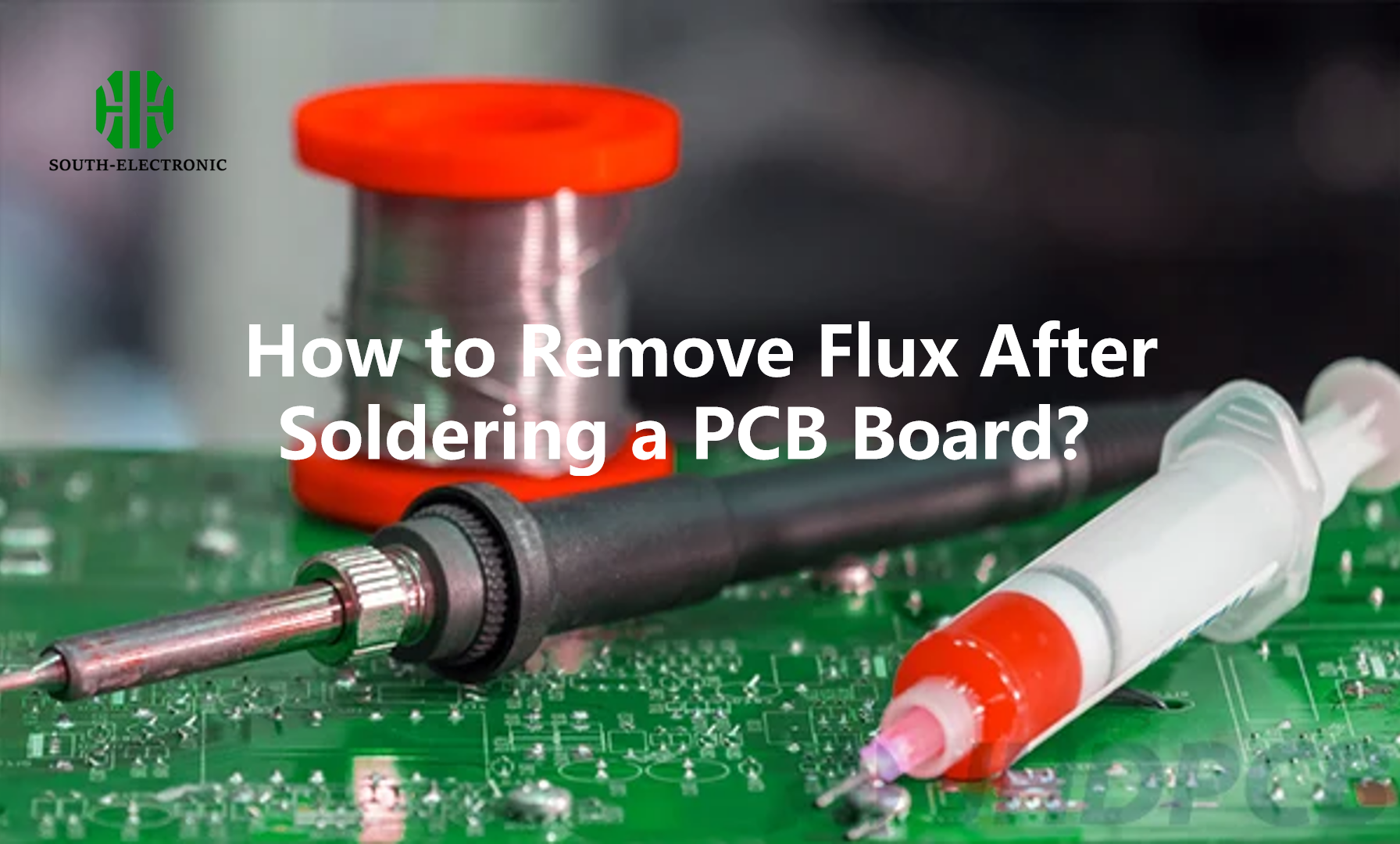How to Remove Flux After Soldering a PCB Board?
To get rid of flux after soldering a PCB board, you can do one of the following: Clean with isopropyl alcohol (IPA) by gently scrubbing the flux residue with a brush and wiping it off with a lint-free cloth; use a dedicated flux remover for stubborn residues; for complex PCBs, an ultrasonic cleaner can provide thorough cleaning; or use acetone, but handle it carefully to avoid damaging the PCB. Choose the method that best suits your project needs to ensure a clean and reliable circuit board.
Why Should You Remove Flux After Soldering?
Flux is what you use when you solder to clean and prep the metal surfaces so you get a good bond between the components. You have to use flux, but it leaves behind a residue that, if you don’t clean it off, can cause a bunch of problems:
- Corrosion: Flux residues, especially those from acidic fluxes, can cause corrosion over time, degrading the PCB and components.
- Electrical Issues: Residual flux can cause electrical leakage or short circuits, compromising the functionality of the board.
- Aesthetic Concerns: For professional or commercial projects, the visual appearance of the PCB is crucial. Clean boards reflect quality workmanship.
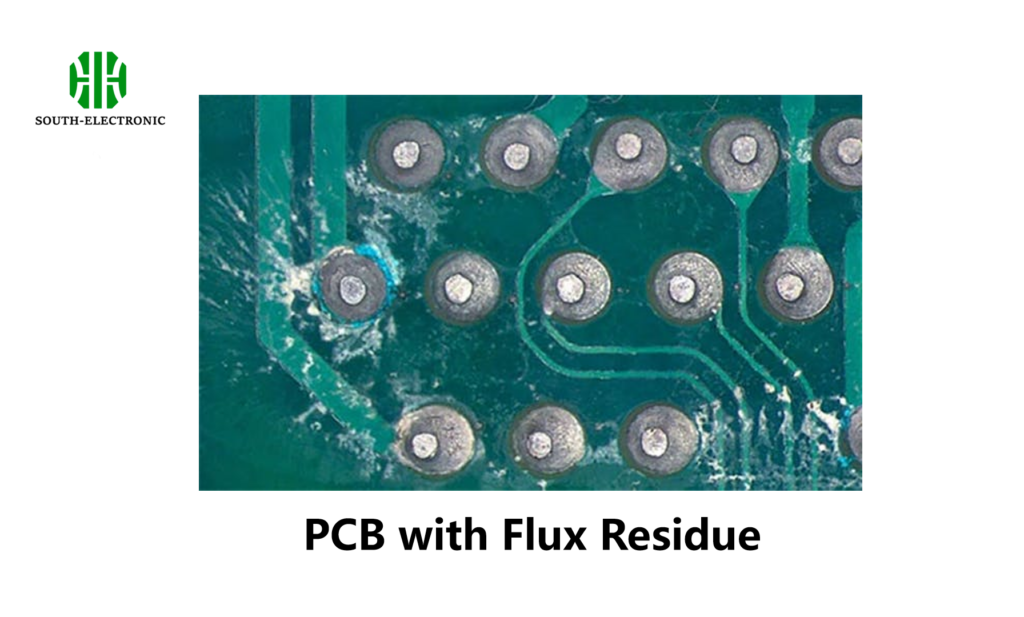
What Are the Best Methods to Remove Flux from PCB Boards?
There are a few ways to get rid of flux residue from PCBs, and which one you choose depends on the kind of flux you used and what you have on hand. Here are a few common methods:
1. Isopropyl Alcohol (IPA) Cleaning
Isopropyl alcohol is a popular choice for cleaning flux due to its effectiveness and availability.
- Materials Needed:
- Isopropyl Alcohol (preferably 99%)
- Soft-bristle brush or swab
- Lint-free wipes
Steps:
- Apply a small amount of isopropyl alcohol to the flux-covered areas.
- Gently scrub with a soft-bristle brush.
- Wipe away the residue with a lint-free wipe.
- Repeat if necessary until the flux is completely removed.
Pros:
- Effective on most flux types.
- Readily available and inexpensive.
Cons:
- May not remove all residues in complex PCB layouts.
- Requires proper ventilation due to alcohol fumes.

2. Dedicated Flux Removers
For more stubborn flux residues or for professional applications, dedicated flux removers are available. These are specially formulated solvents designed to clean flux without damaging the PCB.
- Materials Needed:
- Flux remover (available in spray or liquid form)
- Brush or swab
- Air compressor or canned air for drying
Steps:
- Apply the flux remover according to the manufacturer’s instructions.
- Scrub the area with a brush if necessary.
- Use air to dry the board thoroughly.
Pros:
- Highly effective on difficult residues.
- Safe for most PCB materials.
Cons:
- More expensive than isopropyl alcohol.
- Some products may require special handling.
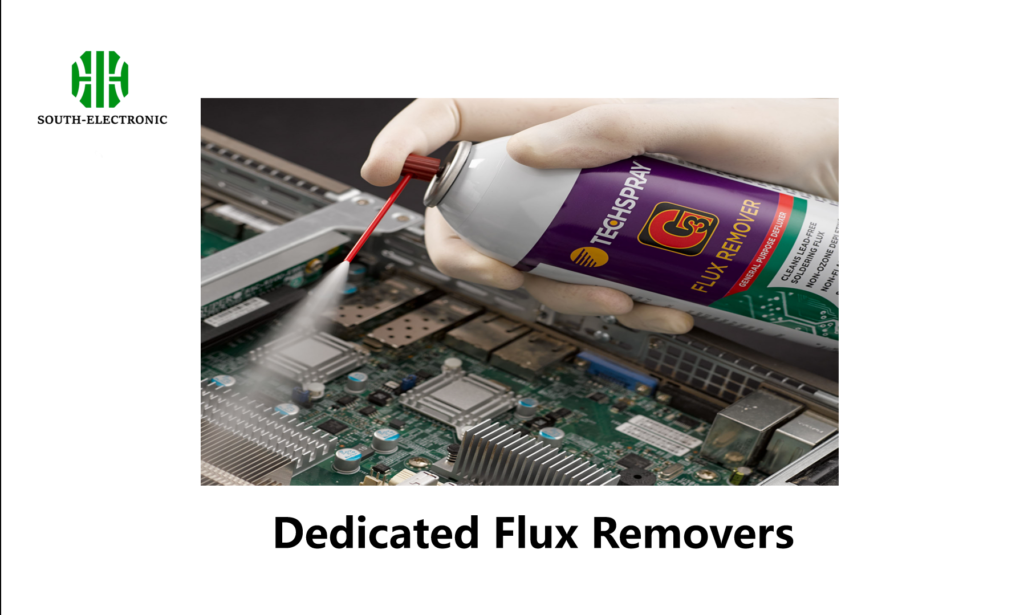
3. Ultrasonic Cleaning
Ultrasonic cleaners use high-frequency sound waves to agitate the cleaning solution, effectively removing flux residues from PCBs, especially in hard-to-reach areas.
- Materials Needed:
- Ultrasonic cleaner
- Suitable cleaning solvent (e.g., deionized water or alcohol-based solution)
Steps:
- Fill the ultrasonic cleaner with the recommended cleaning solution.
- Place the PCB inside the cleaner.
- Run the cleaner according to the manufacturer’s instructions.
- Dry the PCB thoroughly with compressed air or in a warm environment.
Pros:
- Excellent for intricate or densely populated PCBs.
- Non-abrasive and gentle on components.
Cons:
- Requires specialized equipment.
- Not suitable for all types of PCBs (e.g., those with certain sensitive components).
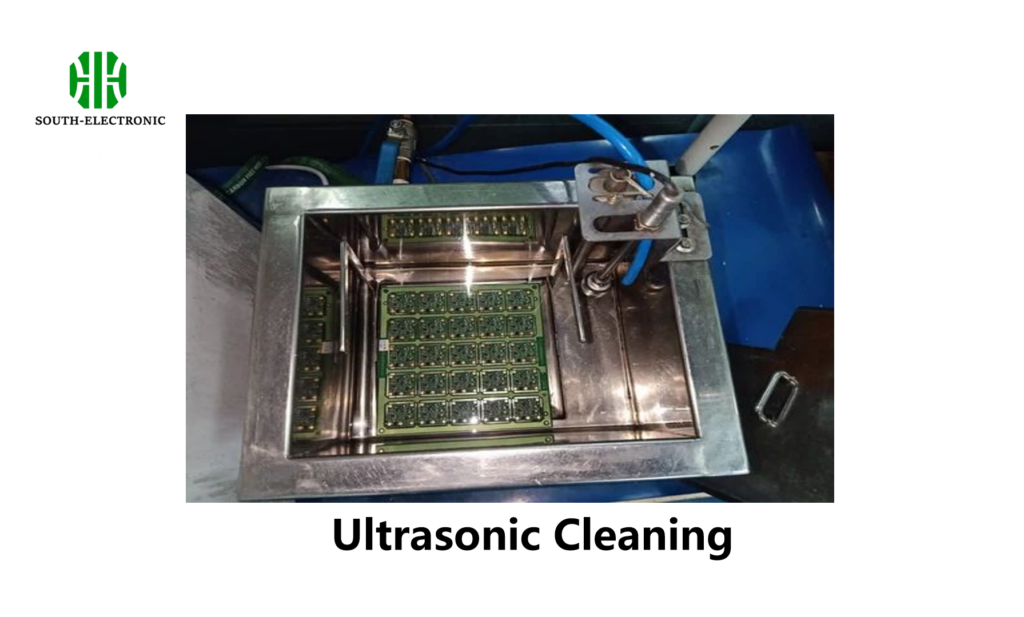
4. Manual Scrubbing with Acetone
Acetone is another solvent that can effectively dissolve flux residues. However, it should be used with caution as it is more aggressive than isopropyl alcohol.
- Materials Needed:
- Acetone
- Cotton swabs or brushes
- Ventilated workspace
Steps:
- Apply acetone to the flux residue.
- Scrub gently with a cotton swab.
- Wipe off the residue with a clean, lint-free cloth.
Pros:
- Highly effective for stubborn residues.
- Works quickly.
Cons:
- Can damage some PCB materials or components.
- Requires careful handling due to its strong fumes.
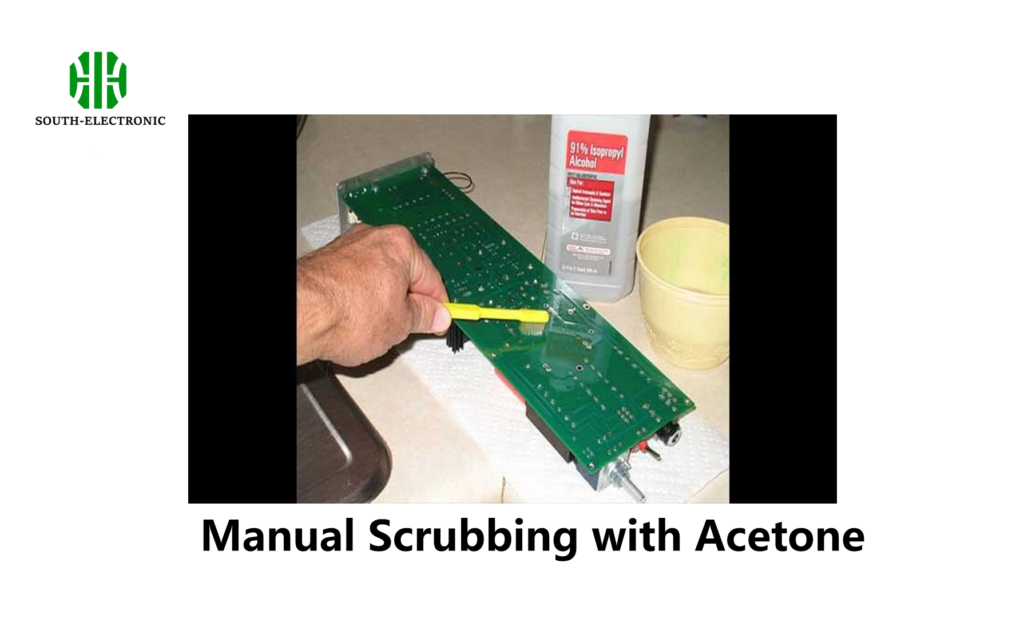
5. Water-Based Cleaning for No-Clean Flux
If you’re using water-soluble flux, you can clean the PCB with deionized water. This method is eco-friendly and effective for specific flux types.
- Materials Needed:
- Deionized water
- Brush or ultrasonic cleaner
Steps:
- Rinse the PCB with deionized water.
- Use a brush or ultrasonic cleaner for thorough cleaning.
- Dry the PCB completely before use.
Pros:
- Environmentally friendly.
- Non-toxic and safe for most components.
Cons:
- Not suitable for non-water-soluble flux types.
- Requires complete drying to prevent water damage.
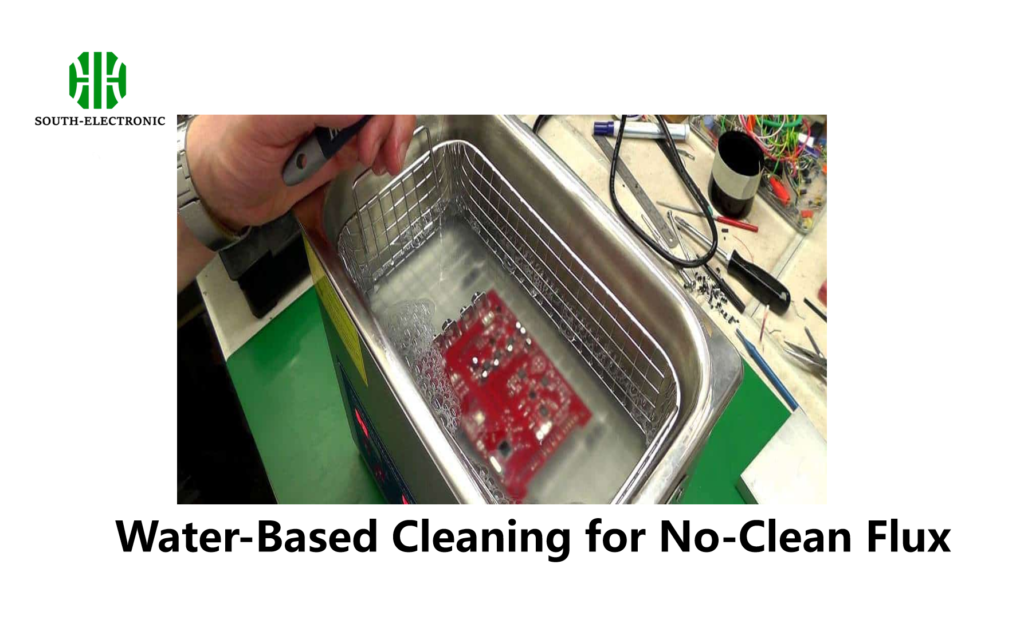
How to Clean Flux Residue After Silver Soldering?
Silver soldering, often used in high-reliability electronic assemblies, requires thorough cleaning to remove flux residues that can compromise the integrity of the joints.
Steps to Clean Flux After Silver Soldering:
- Neutralization: Use a solution of soda ash and water to neutralize acidic flux residues. Dip or wash the assembly in this solution, then rinse with clear water.
- Solvent Cleaning: Follow up with a solvent like isopropyl alcohol or acetone to ensure all residues are removed.
- Drying: Use warm air or an air compressor to dry the assembly completely.
Tip: Always follow up with a thorough inspection to ensure no residues are left behind.
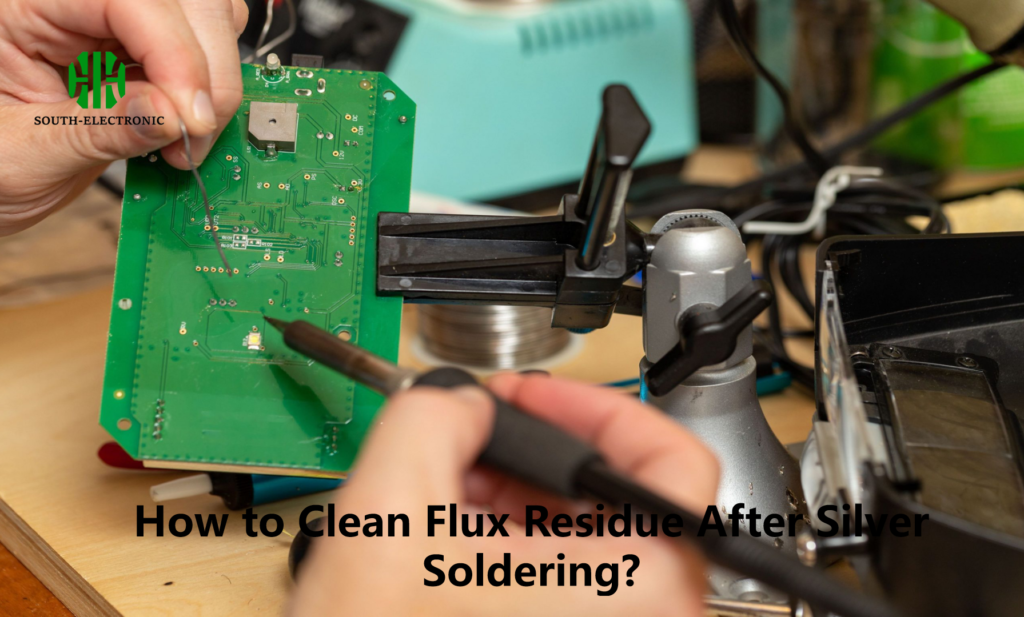
Alternatives to Isopropyl Alcohol for Flux Removal
While isopropyl alcohol is a go-to solvent for flux removal, several alternatives can be used, especially in situations where alcohol is not available or suitable:
| Alternative Solvent | Effectiveness | Best Use Case |
|---|---|---|
| Acetone | High | Stubborn rosin-based fluxes |
| Flux Removers | Very High | Professional cleaning applications |
| Water | Moderate | Water-soluble fluxes |
| Citrus-based Cleaners | Moderate | Eco-friendly applications |
| Ethyl Alcohol | Moderate | General purpose cleaning |
Getting rid of flux from PCB boards is a crucial step in making sure your electronic projects work well and last a long time. You need to use the right tools and techniques based on the kind of flux you’re dealing with and what you’re trying to do with your project. Cleaning things up not only makes your boards work better, but it also shows people you know what you’re doing.

